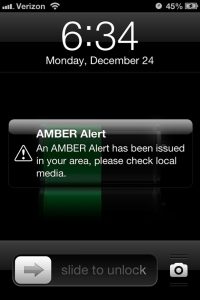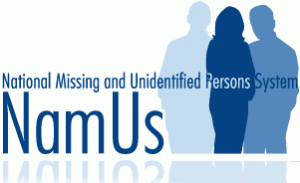How to Get Involved
 In today’s highly populated and fast moving world, crime has become a fact of life. Nearly everybody accepts it and fears it happening to them. As a result, people have taken security precautions to protect themselves and their belongings from becoming victims to crime. People pay for state-of-the-art security systems, alarms, and attend self-defense classes. People take all the available precautions to avoid crime, but not many people engage in trying to solve existing crimes. Today we put all of that pressure on law enforcement, however, there is a lot that everyday people can do to help make the world a safer place.
In today’s highly populated and fast moving world, crime has become a fact of life. Nearly everybody accepts it and fears it happening to them. As a result, people have taken security precautions to protect themselves and their belongings from becoming victims to crime. People pay for state-of-the-art security systems, alarms, and attend self-defense classes. People take all the available precautions to avoid crime, but not many people engage in trying to solve existing crimes. Today we put all of that pressure on law enforcement, however, there is a lot that everyday people can do to help make the world a safer place.
Social Media
In today’s society, nearly everyone is connected to at least one social media website. From Facebook to Twitter to Tumblr to Instagram, people are familiar with using the internet to communicate with their friends, post about their lives, and even connect with potential employers. What many people don’t know, however, is that social media is one of the easiest outlets that they can use to assist with crime solving. There are numerous Facebook and Twitter accounts dedicated to spreading awareness of missing people. Organizations like Amber Alert and the National Center for Missing and Exploited Children have Facebook and Twitter pages that post new cases and frequent updates, and allow users to ‘share’ the information with their friends and continue to spread the word with the click of a mouse.
Websleuths
Websleuths is an online forum that is dedicated to solving crimes, with a focus on violent crimes and missing persons cases. Websleuths was lauched in 1999 and has become a community full of amateur crime investigators. Websleuth users use public records to solve cases. In essence, Websleuthers have almost the same sources as the police, but do not need to rely on funds and can sleuth on their own free time. Weblseuths users have helped to identify countless unidentified bodies, and have assisted in investigations like the high profile Casey Anthony case. Websleuths is free and open to the public, though users must make an account before posting. Websleuths also runs a weekly Crime Radio show.
NamUs
 NamUs is the National Missing and Unidentified Persons System. NamUs functions as a database of missing persons cases and unidentified human remains. Visitors to the website have acess to the databases and the news room, which is a source for media updates. Recently, NamUs has added the Unclaimed Persons database, which features remains who have been identified by name but have not been claimed by any family. According to the website, “When a new missing persons or unidentified decedent case is entered into NamUs, the system automatically performs cross-matching comparisons between the databases, searching for matches or similarities between cases. NamUs provides free DNA testing and other forensic services, such as anthropology and odontology assistance.” The databeses allow users to search by name, sex, and date that the person was found or reported missing. For the Missing Persons database, users can read profiles of missing people that include information about the person’s name, age, appearance, and circumstances of the disappearance. The Unidentified Persons database allows users to search by sex, race, ethnicity, date last known alive, age last known alive, and state last known alive. The unidentified persons profiles consist of all available information, including estimated age, estimated date of death, list of present body parts (if not all are present), location of discovery, estimated cause of death, physical features of the deceased, images, evidence of medical procedures, fingerprints, dental records, available DNA, and any other information that could aid in identification. They alos have the exclusions, a list of individuals who have been determined to not be the identities of the unidentified person. The profiles also list contact numbers for anyone who would like to present information to the case managers.
NamUs is the National Missing and Unidentified Persons System. NamUs functions as a database of missing persons cases and unidentified human remains. Visitors to the website have acess to the databases and the news room, which is a source for media updates. Recently, NamUs has added the Unclaimed Persons database, which features remains who have been identified by name but have not been claimed by any family. According to the website, “When a new missing persons or unidentified decedent case is entered into NamUs, the system automatically performs cross-matching comparisons between the databases, searching for matches or similarities between cases. NamUs provides free DNA testing and other forensic services, such as anthropology and odontology assistance.” The databeses allow users to search by name, sex, and date that the person was found or reported missing. For the Missing Persons database, users can read profiles of missing people that include information about the person’s name, age, appearance, and circumstances of the disappearance. The Unidentified Persons database allows users to search by sex, race, ethnicity, date last known alive, age last known alive, and state last known alive. The unidentified persons profiles consist of all available information, including estimated age, estimated date of death, list of present body parts (if not all are present), location of discovery, estimated cause of death, physical features of the deceased, images, evidence of medical procedures, fingerprints, dental records, available DNA, and any other information that could aid in identification. They alos have the exclusions, a list of individuals who have been determined to not be the identities of the unidentified person. The profiles also list contact numbers for anyone who would like to present information to the case managers.
Doe Network
The Doe Network was created in 2001 by the Internatinal Center for Unidentifed and Missing Persons. The Doe Network is very similar to NamUs, but is a database for international missing persons and unidentified cases. In North America, Australia, and Europe. Users can search by country, chronology, and view nearly 100 indexes of photos. The photos are rarely of the actual remains, and are usually depictions made by forensic sketch artists and sculptors.
Assisting in Searches/Flyer Distribution
Another way that the public can get involved in solving crimes is by assisting in public searches and flyer distribution. When somebody goes missing, there are often public searches that anyone can get involved in. volunteers may search in wooded areas or help in raising public awareness of the missing person by distributing flyers and posters.
Calling 911
One of the most important things that you can do to help fight crime is by calling the police when you think a potential crime has taken place or is about to take place. Reporting suspicious activity can get investigations moving earlier and faster, and even prevent other crimes from taking place. If you see something suspicious, it is important to do your part by calling the police and telling them what you saw. Elizabeth Smart was rescued after a 9-month kidnapping when concerned citizens called 911.
Back to Crime Library
|
|
|
